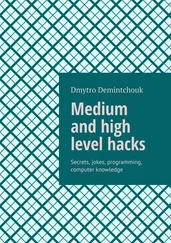As Crockett and I worked around the ship, I stopped on the right side of the fuselage to stick my finger in the fuel tank filler neck. This was my preferred way of checking the JP-4 level. For some reason, I never completely trusted fuel gauges.
There was another thing new about number 249. At my request, a new XM27E1 armament subsystem was mounted on the aircraft’s left side. This was the rotating six-barrel, 7.62mm minigun that, on slow fire, expended two thousand rounds per minute, and four thousand per minute on fast fire.
Though I had little support among the experienced scout pilots in the platoon, I wanted a minigun on my ship. I had taken fire on several occasions flying with Jones and Morrison, and I had made up my mind that I wanted to be able to throw a little stuff back when the situation required. Even though Herchert’s policy didn’t authorize scouts to fly with miniguns, he didn’t seem too bent out of shape when I asked for one. Of course, I wasn’t sure he knew that I had actually had one installed.
Finishing up our preflight outside, I climbed aboard and strapped in. Crockett grabbed the fire extinguisher from its rack on the right side of my seat and posted himself as fire guard. I fingered the starter switch with my right index finger and started cranking the turbine.
In a little more than a minute, the ship was running and ready to back out of the revetment. Crockett secured the fire extinguisher, made a quick walk around to the left side of the ship to remove the bullet trap assembly from the minigun barrels, then slid into his seat behind me.
With Crockett strapped in, I pulled the collective up enough to get the ship light on her skids. Then I did my health indicator and trend test (HIT) check to make sure that engine power was responding as it should, and I was ready to go. I keyed my intercom mike. “OK, Crockett, are we clear to the rear?”
Crockett leaned forward from his seat so that he could see out the door. “OK, sir, you’re clear…up and rear.” He quickly followed with, “Your tail is clear right,” letting me know that I could swing into a climbing left turn out of the revetment area without running 249’s tail into anything.
I keyed my mike again: “Phu Loi tower, this is Darkhorse One Seven. I’ve got a hunter-killer team on the cav pad… north departure Phu Cuong along the Saigon… Lai Khe.”
“Roger, Darkhorse One Seven flight of two, you’re cleared to taxi to and hold short of runway three three. Winds are three five zero at eight knots, gusting to twelve knots. Altimeter setting three zero zero six. You’ll be number two for takeoff following the Beaver on takeoff run now.”
I responded to the tower by reading back the altimeter setting, while I actually cranked in the setting on my instrument. This was always necessary in order to calibrate my altimeter to current barometric pressure.
Pulling up short of runway three three, I waited for the Cobra. It took them longer to get cranked since their engine and systems were more complicated than those of the OH-6. Once the aircraft was beside me, I looked over at Carriss and gave him a thumbs-up and keyed my mike on troop VHF: “Three Eight, this is One Seven. Are you ready?”
Carriss triggered his transmit switch twice, indicating that he was set to go.
We both picked up and moved out to three three where Carriss led the takeoff. The Cobra was always in the lead on takeoff, with the scout pulling over to his side very carefully.
One of the critical things in this two-ship takeoff was to watch the Cobra’s rotor downwash. The Cobra was a much bigger aircraft than the OH-6, and both aircraft were at maximum gross weight because of the full fuel and ammo load. If the OH-6 pulled in just below and in trail with the Cobra, he would be right in the gun’s rotor wash. The scout could easily lose his lift and bounce off the runway a couple of times before he got out of the Cobra’s disturbed air.
As both aircraft cleared the perimeter fence, I could see the Cobra’s minigun turret flexing as Carriss’s front-seater began checking out his gun system. In our ship, Crockett did the same. Passing the perimeter fence was his signal to pull his M-60 back into his lap, draw the bolt back, load, and take the gun from safe to fire.
It was my signal, too. I stuck my left knee under the collective stick to maintain rate of climb and reached over to the console circuit breaker to power-up the armament subsystem. Then I went to the instrument panel with my freed-up left hand to flip on the master arms switch and turn the selector switch to “fire norm.”
At that point, all the weapons in the team were hot and ready for any situation we might encounter. Any area outside the base could hold an enemy capable of firing on our aircraft. So when we crossed the fence, we had to be ready.
At fifteen hundred feet, out of the range of small-arms fire, I pulled the ship up on the Cobra’s wing and into an echelon left for the flight over to Phu Cuong. The Cobra maintained about ninety to one hundred knots so the scout could keep up.
Crockett and I practiced a few signals over the intercom so we’d know exactly how the other would react when we got down low. Then we relaxed and smoked a cigarette. As we cruised along toward Phu Cuong, we engaged in a little small talk about the weather and the terrain below, and just kidded around to relax a bit before reaching the search area and possible contact with the enemy.
Snapping me back to reality, Carriss came up on VHF: “One Seven, you see the intersection of the Thi Tinh and the Saigon right off your nose?”
“Yes, I’ve got it.”
“Due east of the intersection about three hundred yards, there’s a big green open space. Let’s put you down in that area and work from there.”
“Roger that.” I could feel my exhilaration building. Finally, here I was in control of my own scout ship. I wasn’t on an orientation or transition flight with someone sitting in the cockpit checking me out. There was just me and the crew chief. Crockett was completely dependent on me to fly that aircraft.
I began a visual search of the grassy area below. One of the many things I had learned from Jones and Morrison was that you just don’t go down from altitude into a search area. You look it over first, while you are still high enough to change your mind if the enemy is waiting for you. I was looking for people, some sign of foot trails, or for anything else that seemed out of the ordinary.
Sensing that the letdown area looked OK, Carriss came up on my VHF: “OK, One Seven, we’re going to do a VR up the Saigon River. We’ve got a free-fire five hundred meters on both sides of the Big Blue. No river traffic is authorized until after 8 A.M., SO anything you see this early is enemy. You’ll be clear to fire once you’re down. When you’re down, come around on a heading of three three zero degrees until you hit the river and I’ll give you another heading from there.”
I hit the right pedal, moved the cyclic stick right forward, and dropped the collective. This was a maneuver that Jones had taught me: The aircraft went out of trim on the right side and quickly skidded into a right-hand descending turn. I lost altitude fast this way and was on the deck in seconds. Carriss put the Cobra into a left-hand orbit so he could keep me in sight.
As the ground approached, I leveled the ship by moving the cyclic to left forward and pulling in power with the collective. This rolled me out straight ahead with a cardinal direction, which I needed to change immediately. Steering a straight-line course directly into the search area could be fatal if enemy ground troops happened to be around.
So the minute I rolled out, I turned. Turned again. Then again, finally going into a couple of orbits around the grassy area to make sure I was OK. I didn’t see anything, and nobody was shooting at me.
Читать дальше












